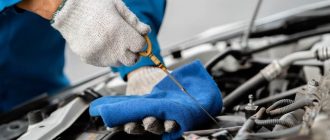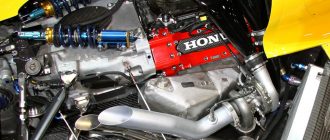What Regulates the Car Engine Temperature
Cooling System
The cooling system is a network of components that work together to keep the engine at a safe operating temperature. The main components of the cooling system are:
* **Water pump:** The water pump circulates coolant through the engine and radiator.
* **Radiator:** The radiator is a heat exchanger that transfers heat from the coolant to the surrounding air.
* **Thermostat:** The thermostat controls the flow of coolant through the radiator.
* **Coolant:** Coolant is a liquid that absorbs heat from the engine and transfers it to the radiator.
Temperature Sensors
The engine’s temperature is monitored by several temperature sensors. These sensors send signals to the engine control unit (ECU), which uses this information to adjust the operation of the cooling system.
Engine Control Unit (ECU)
The ECU is the brain of the engine’s cooling system. It receives signals from the temperature sensors and uses this information to control the operation of the water pump, radiator fan, and other components of the cooling system.
How the Cooling System Works
The cooling system works as follows:
1. The water pump circulates coolant through the engine.
2. The coolant absorbs heat from the engine and transfers it to the radiator.
3. The radiator transfers heat from the coolant to the surrounding air.
4. The coolant returns to the engine, where it absorbs more heat.
The thermostat controls the flow of coolant through the radiator. When the engine is cold, the thermostat is closed and coolant does not flow through the radiator. As the engine warms up, the thermostat opens and allows coolant to flow through the radiator.
The ECU uses the signals from the temperature sensors to adjust the operation of the water pump and radiator fan. The water pump speed is increased when the engine is hot, and the radiator fan is turned on when the coolant temperature reaches a certain level.
Cooling System Problems
Several problems can occur with the cooling system, including:
* **Leaking coolant:** A leaking cooling system can lead to overheating and engine damage.
* **Clogged radiator:** A clogged radiator can restrict the flow of coolant and lead to overheating.
* **Faulty thermostat:** A faulty thermostat can prevent the coolant from flowing through the radiator, leading to overheating.
* **Faulty water pump:** A faulty water pump can fail to circulate coolant through the engine, leading to overheating.
Preventing Cooling System Problems
Several things can be done to prevent cooling system problems, including:
* **Regularly check the coolant level:** The coolant level should be checked regularly and topped up if necessary.
* **Flush the cooling system:** The cooling system should be flushed every few years to remove any debris or sediment that may have accumulated.
* **Replace the thermostat regularly:** The thermostat should be replaced every few years to ensure it is working properly.
* **Inspect the water pump regularly:** The water pump should be inspected regularly for leaks or other signs of damage.
By following these tips, you can help prevent cooling system problems and keep your engine running at a safe operating temperature.




